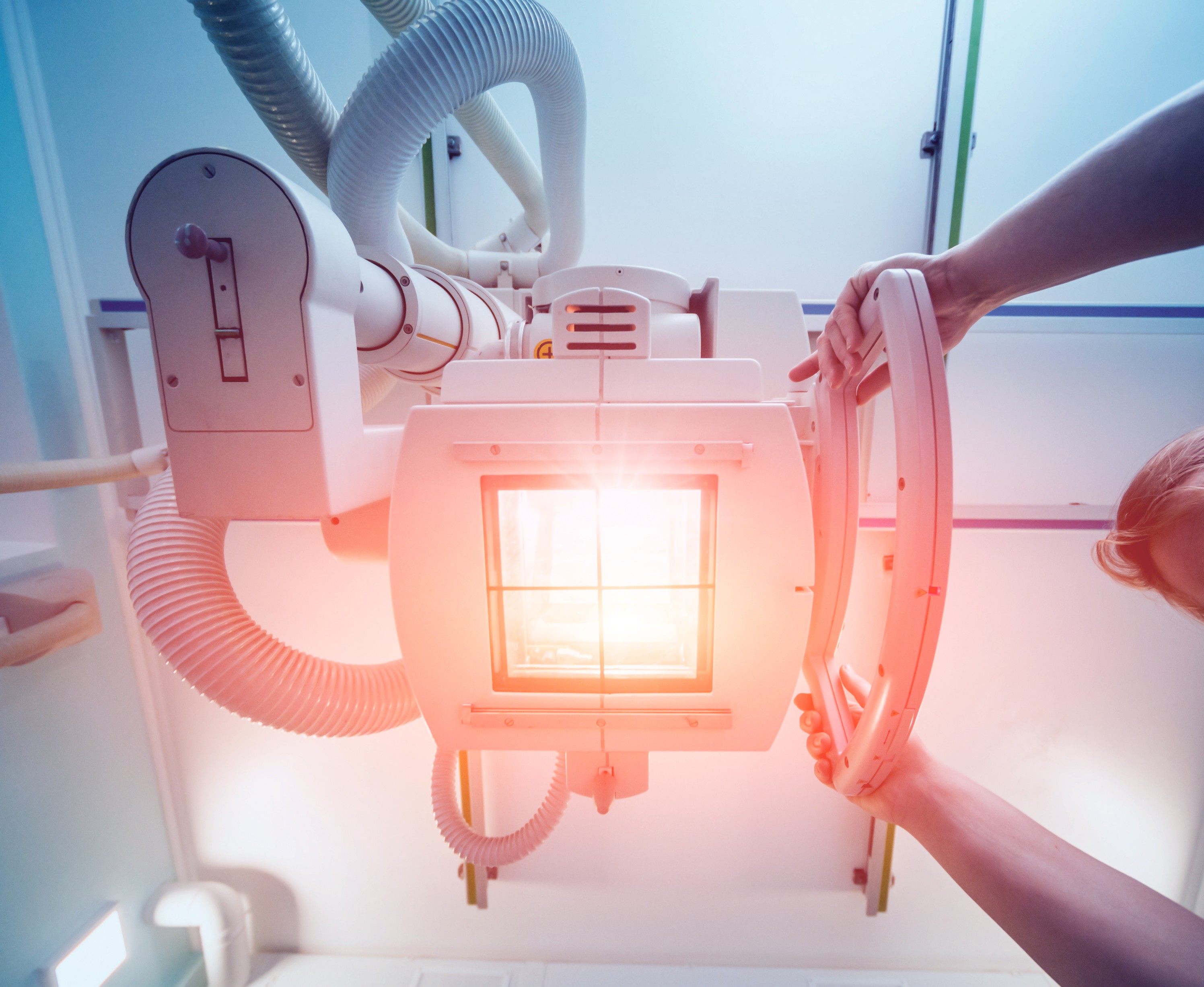
- Health Hub
- /
- scans

Radiation is energy released in electromagnetic wave form.1 Some exposure to radiation is normal when you live on earth–it comes from cosmic rays, radioactive earth substances, and naturally occurring radon.2 A human being’s average exposure to this kind of “background radiation” in a year is 3 millisieverts (mSv). This is considered a small, basically unimportant amount of radiation. It has very little effect on overall health.
Exposure to radiation at higher amounts, however, can damage your body’s cells and increase your risk of developing cancer. It’s always a good idea to talk to your doctor when you're considering medical imaging so that you can make an informed decision about whether the diagnostic benefit outweighs the risk of radiation exposure in your case. You can always ask if there are alternative tests available to you as well.
Several of the staple imaging scans (X-ray, CT, PET) expose you to radiation, while others (MRI, ultrasound) do not.
X-rays, CTs, and PET scans use ionizing radiation on a section of the body to create images of bones, organs, tissues, vessels, etc. Lead aprons may be placed on either side of the targeted area to shield the parts of your body that aren’t being imaged and minimize overall radiation exposure.
In contrast, MRIs use magnetic fields and radio waves to capture internal images, while ultrasounds use high-frequency sound waves. Neither test involves radiation.
For reference:
In most cases, the diagnostic benefit of a radiation-producing imaging scan will outweigh the exposure risk. However, radiation is cumulative and too much of it in your body is not a good thing. Repeated exposure to radiation should be avoided where possible. Children and adolescents should also avoid imaging tests that use radiation whenever possible.
Where to find a medical imaging center near you
When you’re ready to schedule your scan, you can head over to scan.com’s easy-to-use scan search tool to find reputable imaging centers in your area.
Resources:
cancer.gov: NCI Dictionary of Cancer Terms - National Cancer Institute
health.harvard.edu: Radiation risk from medical imaging - Harvard Health
cancer.org: Understanding Radiation Risk from Imaging Tests
Search for local MRI imaging centers near you and book online in minutes.